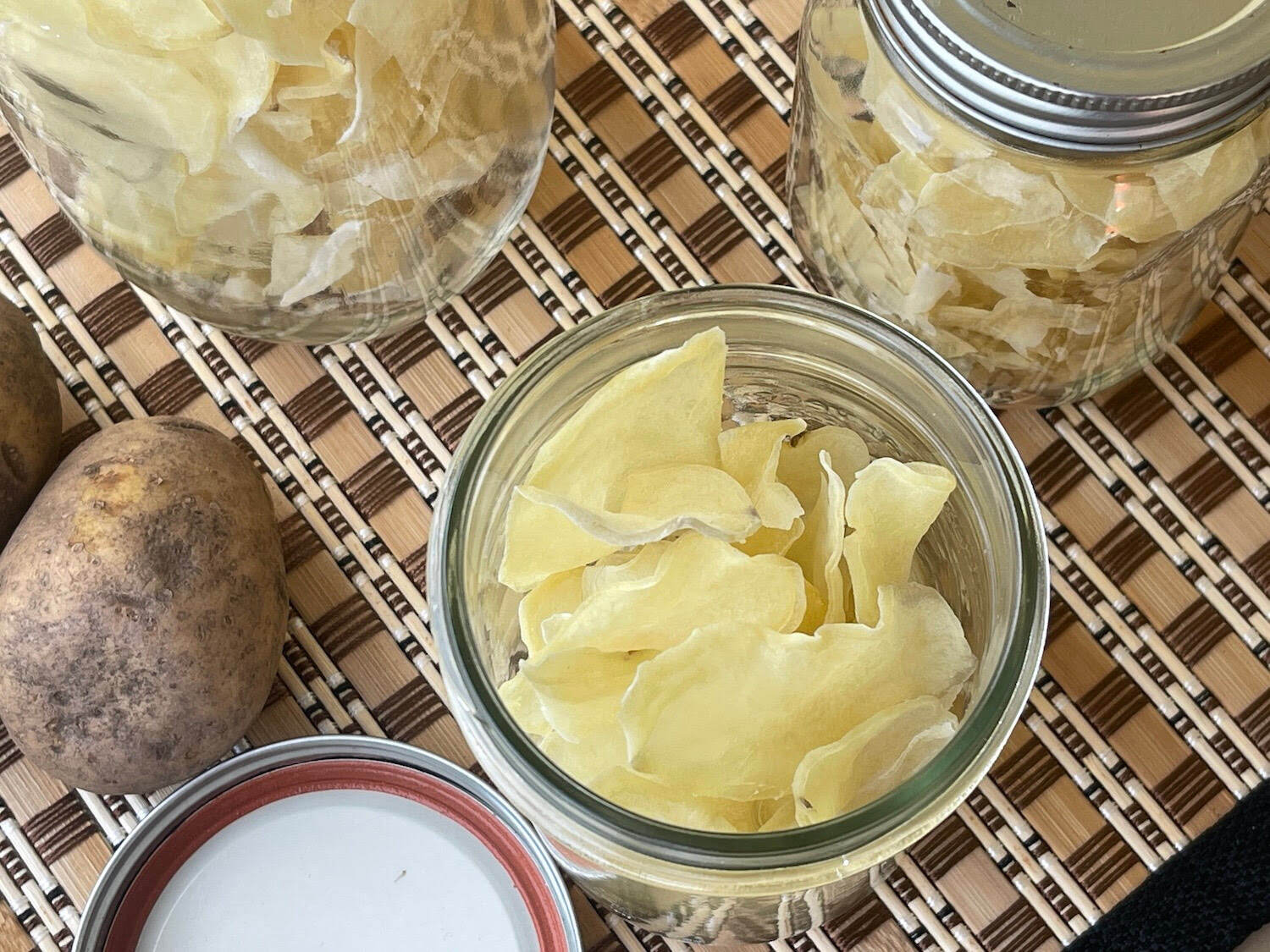

Articles
How To Store Dehydrated Potatoes
Modified: October 21, 2024
Discover the best way to store dehydrated potatoes with our helpful articles. Keep your potatoes fresh and delicious for longer with these storage tips.
(Many of the links in this article redirect to a specific reviewed product. Your purchase of these products through affiliate links helps to generate commission for Storables.com, at no extra cost. Learn more)
Introduction
Dehydrating potatoes is a fantastic way to preserve this versatile and nutritious vegetable for long-term storage. Whether you grow your own potatoes or simply want to take advantage of a great deal at the grocery store, learning how to dehydrate potatoes allows you to enjoy their flavor and nutritional benefits all year round.
Dehydrating potatoes involves removing the moisture content from the vegetable, which in turn extends their shelf life significantly. Not only does this preservation method prevent wastage, but it also allows for easy and convenient use in various recipes. Plus, dehydrated potatoes retain most of their nutrients, making them a handy addition to any pantry.
In this article, we will explore the benefits of dehydrating potatoes, discuss how to choose the right potatoes for dehydration, provide step-by-step instructions for preparing and dehydrating potatoes, share methods for storing dehydrated potatoes, offer tips for long-term storage, and explore creative ways to use dehydrated potatoes in your cooking.
So, if you’re ready to expand your culinary options and have a supply of dehydrated potatoes on hand whenever you need them, let’s dive into the world of potato dehydration!
Key Takeaways:
- Dehydrating potatoes offers extended shelf life, easy storage, retained nutrition, versatility, cost savings, and convenience, making it a valuable skill for preserving this nutritious vegetable.
- Properly storing and rehydrating dehydrated potatoes is essential for maintaining their quality and flavor, allowing for a wide range of creative culinary uses and ensuring year-round enjoyment.
Benefits of Dehydrating Potatoes
Dehydrating potatoes offers several benefits that make it an attractive preservation method:
- Extended Shelf Life: Dehydrated potatoes have a much longer shelf life compared to fresh potatoes. By removing the moisture content, the growth of bacteria, mold, and other microorganisms is inhibited, ensuring that your potatoes stay fresh for an extended period.
- Easy Storage: Dehydrated potatoes take up much less space than fresh potatoes. This makes storage more convenient, especially if you have limited pantry space. You can store them in airtight containers, jars, or vacuum-sealed bags, allowing you to stock up on potatoes without worrying about them spoiling.
- Nutritional Value: Dehydrating potatoes retains their essential vitamins, minerals, and fiber content. Although the dehydration process removes some water-soluble vitamins like vitamin C, the overall nutritional value remains largely intact. This means that you can still enjoy the health benefits of potatoes even after dehydration.
- Versatility: Dehydrated potatoes can be rehydrated and used in a wide variety of recipes. From soups and stews to casseroles and side dishes, the versatility of dehydrated potatoes makes them a valuable addition to your culinary repertoire. You can easily incorporate them into your favorite recipes or experiment with new dishes.
- Cost Savings: Dehydrating potatoes can save you money. It allows you to take advantage of bulk buying or purchasing potatoes when they are in season or on sale. By dehydrating them, you can preserve these potatoes for later use, eliminating the need to buy fresh potatoes at higher prices throughout the year.
- Convenience: Having a stock of dehydrated potatoes on hand can be incredibly convenient, especially during busy times. Whether you need a quick side dish or want to whip up a last-minute meal, rehydrating dehydrated potatoes is a simple and time-saving process. No more peeling, chopping, and boiling potatoes when you’re short on time!
As you can see, dehydrating potatoes offers many advantages that make it a worthwhile method of preserving this humble vegetable. So, let’s move on to the next step, which is choosing the right potatoes for dehydration!
Choosing Potatoes for Dehydration
When it comes to dehydrating potatoes, not all varieties are created equal. While you can dehydrate any type of potato, some varieties work better than others. Here are a few things to consider when choosing potatoes for dehydration:
- High Starch Content: Choose potatoes that have a high starch content, such as Russet or Idaho potatoes. These varieties have a lower moisture content, making them ideal for dehydration. The higher starch content also helps to maintain the texture of the potatoes after dehydration.
- Firm and Fresh: Select firm and fresh potatoes for the best results. Avoid potatoes that are soft, sprouted, or have any signs of decay. Fresh potatoes will dehydrate better and have a longer shelf life.
- Avoid Waxy Potatoes: Waxy potatoes, like red or new potatoes, have a higher moisture content and lower starch content. While you can still dehydrate them, they may not produce the same crispy texture as high-starch potatoes. However, if you prefer a softer texture, feel free to experiment with different potato varieties.
- Uniform Size: For even dehydration, try to select potatoes that are roughly the same size. This will ensure that they dehydrate at the same rate, resulting in consistent quality and texture.
- Skin On or Off: You can choose to dehydrate potatoes with the skin on or off, depending on your preference. Leaving the skin on adds extra flavor and nutrients, but peeled potatoes tend to rehydrate faster. If you decide to keep the skins, make sure to scrub them thoroughly before dehydrating to remove any dirt or debris.
- Consider Purpose: Consider the final use of the dehydrated potatoes. If you plan to use them for mashed potatoes, it’s best to choose larger potatoes. Smaller potatoes are ideal for soups, stews, or salads. Keep in mind the intended purpose to select the best potato size for your needs.
By considering these factors, you can choose the right potatoes for dehydration that will yield excellent results. Now that you have selected your potatoes, let’s move on to the next step: preparing them for dehydration.
Preparing Potatoes for Dehydration
Before you can start dehydrating potatoes, it’s important to properly prepare them to ensure the best results. Follow these steps to prepare your potatoes for dehydration:
- Wash and Scrub: Start by giving your potatoes a good wash and scrub to remove any dirt or debris. Use a vegetable brush or your hands to clean the skin thoroughly. This step is especially crucial if you plan to keep the skin on.
- Peel (Optional): If you prefer, you can peel the potatoes before dehydrating them. Use a vegetable peeler or a sharp knife to remove the skin. This step is a matter of personal preference and depends on the texture you desire in your dehydrated potatoes.
- Slice or Dice: Once cleaned and peeled, it’s time to slice or dice the potatoes. Consider the intended use of the dehydrated potatoes. For example, if you plan to make hash browns or potato chips, thin slices are preferable. If you want to use them in stews or soups, dicing them into small cubes works well. Aim for uniform thickness to ensure even drying.
- Pre-treatment (Optional): Some people choose to pre-treat potatoes before dehydrating to prevent browning and improve the texture. Pre-treatment methods include blanching, steam blanching, or soaking the potatoes in lemon water or a citric acid solution. Pre-treatment is optional but can be beneficial if you want to maintain the color and texture of the potatoes.
- Pat Dry: Before placing the potatoes on the dehydrator trays, pat them dry with a clean towel or paper towel. Excess moisture can extend the dehydration process and affect the quality of the final product.
Following these steps will ensure that your potatoes are properly prepared for dehydration. Now, let’s explore the various methods of dehydrating potatoes.
Methods of Dehydrating Potatoes
There are various methods you can use to dehydrate potatoes, depending on the equipment you have available and your personal preference. Here are three common methods for dehydrating potatoes:
- Dehydrator: Using a food dehydrator is one of the most popular and convenient methods for dehydrating potatoes. Simply arrange the sliced or diced potatoes on the dehydrator trays, leaving space between each piece for proper airflow. Set the dehydrator to the recommended temperature (usually around 125°F to 135°F) and let it run for several hours or until the potatoes are fully dehydrated and crispy.
- Oven: If you don’t have a food dehydrator, you can still dehydrate potatoes using your oven. Preheat the oven to the lowest temperature setting (usually around 170°F), and place the prepared potatoes on a baking sheet lined with parchment paper or a silicone mat. Leave the oven door slightly ajar to allow moisture to escape. Check on the potatoes regularly and rotate the baking sheet for even drying. It may take several hours to dehydrate the potatoes fully, depending on their thickness.
- Sun-Drying: If you live in a hot and dry climate, sun-drying can be an effective method for dehydrating potatoes. However, it requires consistent sunny weather and a well-ventilated area. Slice the potatoes and arrange them on drying racks or mesh screens. Place the racks or screens in a sunny location with good airflow, making sure to protect the potatoes from insects and animals. Regularly monitor the potatoes and bring them indoors overnight or if there is a risk of rain or extreme humidity.
Each method has its advantages and limitations. A food dehydrator offers precise temperature control and faster drying times, while the oven method requires more monitoring but can still yield excellent results. Sun-drying is a natural and cost-effective option but relies heavily on environmental conditions.
Regardless of the method you choose, make sure the potatoes are fully dehydrated before storing them. They should be crisp and brittle, with no signs of moisture. Once the potatoes are dehydrated, it’s time to move on to the next step: storing them properly.
Store dehydrated potatoes in an airtight container in a cool, dark place to maintain their quality and prevent moisture from rehydrating them. Adding an oxygen absorber can also help prolong their shelf life.
Read more: How To Make Potato Chips With A Dehydrator
Storing Dehydrated Potatoes
Proper storage is crucial to preserve the quality and shelf life of dehydrated potatoes. By following these guidelines, you can ensure that your dehydrated potatoes remain fresh and flavorful for an extended period:
- Cool and Dry Environment: Store your dehydrated potatoes in a cool, dry, and dark environment. Exposure to heat, moisture, and light can compromise the quality and shorten their shelf life. Aim for a storage area with a temperature below 60°F (15°C) and humidity levels below 60%.
- Airtight Containers: Transfer the cooled dehydrated potatoes into airtight containers to protect them from moisture and pests. Mason jars, food-grade plastic containers, or vacuum-sealed bags work well for storing dehydrated foods. Ensure that the containers are clean and completely dry before use.
- Labels and Dates: It’s important to label the containers with the contents and the date of dehydration. This will help you keep track of the storage time and usage. Use a permanent marker or labels that adhere well to the containers.
- Absorbent Packs: Consider placing moisture-absorbing packets or oxygen absorbers in the containers with the dehydrated potatoes. These packets help to reduce moisture and oxygen, further extending the shelf life. Make sure to use food-grade packets and follow the instructions for proper usage.
- Store in Small Batches: It’s advisable to store dehydrated potatoes in small batches rather than in one large container. This way, if one batch is compromised, you won’t risk losing the entire supply. Additionally, storing in smaller portions allows for easy access and reduces the risk of moisture exposure during opening and closing.
When stored properly, dehydrated potatoes can have a shelf life of up to a year or longer. However, it’s important to regularly check the potatoes for any signs of spoilage, such as mold, off odors, or changes in texture or color. If you notice any abnormalities, discard the affected portion to prevent contamination of the remaining potatoes.
Next, let’s explore some tips for long-term storage to further enhance the longevity of your dehydrated potatoes.
Tips for Long-Term Storage
To maximize the shelf life and quality of your dehydrated potatoes during long-term storage, consider the following tips:
- Cool and Dark Storage: Maintain a cool and dark storage environment for your dehydrated potatoes. Excessive heat and light can accelerate the degradation of the food, leading to a shortened shelf life. A pantry or basement can be a suitable storage location.
- Frequent Inspections: Regularly inspect your stored dehydrated potatoes for signs of spoilage. Check for any mold, discoloration, or off odors. If you detect any issues, promptly discard the affected portions to prevent contamination.
- Rotation System: Implement a rotation system for your dehydrated potatoes to ensure that older batches are used first. This practice helps prevent any potential waste and ensures that you always have a fresh supply on hand.
- Avoid Moisture Exposure: Moisture is the enemy of long-term storage. Keep your dehydrated potatoes away from areas prone to humidity, such as the kitchen or bathroom. Additionally, avoid opening the storage containers unnecessarily, as this can introduce moisture into the environment.
- Store in Multiple Locations: Consider spreading out your storage by distributing your dehydrated potatoes across multiple locations. This way, if one storage area is compromised, you won’t lose your entire supply. Just ensure that all locations maintain suitable storage conditions.
- Use Desiccant Packs: Desiccant packs can be added to the storage containers to help absorb any lingering moisture. These packs are designed to absorb excess moisture, reducing the risk of spoilage. Make sure to use food-safe desiccant packs and follow the instructions for proper usage.
- Proper Re-Sealing: After opening a container of dehydrated potatoes, be sure to reseal it tightly to prevent moisture from infiltrating. Consider using a vacuum sealer if you have one available, as this can provide an extra layer of protection against moisture and air exposure.
By following these tips, you can maintain the quality and freshness of your dehydrated potatoes for an extended period. Remember, the proper handling and storage of dehydrated foods are essential to ensure their longevity.
Now that you know how to store dehydrated potatoes properly, let’s move on to the next step: rehydrating them for use in your favorite dishes!
Rehydrating Dehydrated Potatoes
Rehydrating dehydrated potatoes is a simple process that restores their texture and flavor, making them suitable for use in various recipes. Here’s how to rehydrate your dehydrated potatoes:
- The Soaking Method: Place the desired amount of dehydrated potatoes in a bowl or container, then cover them with hot water. Use a ratio of approximately 1 part potatoes to 2 parts water. Let the potatoes soak for about 15-30 minutes, or until they have absorbed enough water to reach your desired consistency. Drain any excess water before using the rehydrated potatoes.
- The Boiling Method: In a pot, bring water to a boil. Add the dehydrated potatoes to the boiling water, using a ratio of approximately 1 part potatoes to 2 parts water. Cook the potatoes in the boiling water for about 10-15 minutes, or until they have fully rehydrated and become tender. Drain any remaining water before using the rehydrated potatoes.
- The Simmering Method: In a pot, combine the dehydrated potatoes with water, using a ratio of approximately 1 part potatoes to 2 parts water. Bring the mixture to a simmer over low heat and let it cook for about 20-30 minutes, or until the potatoes have absorbed the water and become soft. Stir occasionally to prevent sticking. Once rehydrated, drain any excess liquid before using the potatoes.
After rehydration, your dehydrated potatoes will regain most of their original texture and flavor. They can be used in a variety of recipes, such as mashed potatoes, casseroles, soups, stews, and more.
It’s important to note that the rehydration time may vary depending on the thickness of the potato pieces and the desired consistency. Adjust the soaking or cooking time accordingly to achieve the texture you prefer.
Now that you know how to rehydrate your dehydrated potatoes, let’s explore some creative ways to incorporate them into your cooking!
Creative Ways to Use Dehydrated Potatoes
Dehydrated potatoes are incredibly versatile and can be used in a variety of creative ways in your cooking. Here are some ideas to inspire you:
- Mashed Potatoes: Rehydrate your dehydrated potatoes using the soaking or boiling method mentioned earlier. Once they’re fully hydrated, mash them with butter, milk, and seasonings to create fluffy and flavorful mashed potatoes.
- Potato Soup or Chowder: Add rehydrated dehydrated potatoes to your favorite soup or chowder recipe. The potatoes will absorb the flavors of the soup as they simmer, creating a hearty and delicious dish.
- Potato Pancakes: Combine rehydrated and mashed dehydrated potatoes with flour, eggs, and spices to make crispy and savory potato pancakes. Fry them until golden brown and serve with sour cream or applesauce.
- Casserole Fillings: Use rehydrated dehydrated potatoes as a filling in casseroles. They add heartiness and texture to dishes like shepherd’s pie, scalloped potatoes, or breakfast casseroles.
- Potato Salad: Rehydrate dehydrated potatoes and mix them with mayonnaise, mustard, diced vegetables, and herbs to make a flavorful potato salad. It’s a perfect side dish for picnics, barbecues, or potlucks.
- Potato Gnocchi: Rehydrated dehydrated potatoes can be used to make traditional Italian potato gnocchi. Mix them with flour, eggs, and seasonings to form a dough, then roll and cut into small dumplings. Boil the gnocchi until they float, then serve with your favorite sauce.
- Potato Chips: Thinly slice rehydrated dehydrated potatoes and deep fry or bake them to make homemade potato chips. Season them with salt, pepper, or your favorite spices for a crispy and satisfying snack.
- Potato Bread or Rolls: Use rehydrated dehydrated potatoes to add moisture and flavor to homemade bread or rolls. Simply substitute a portion of the flour with mashed dehydrated potatoes in your favorite bread recipe.
- Potato Toppings: Sprinkle rehydrated dehydrated potato flakes over casseroles, shepherd’s pie, or macaroni and cheese to create a delicious and crispy topping. It adds a delightful texture and flavor to these dishes.
- Potato Frittata: Incorporate rehydrated dehydrated potatoes into a frittata along with eggs, vegetables, and cheese. Bake it in the oven for a filling and protein-packed breakfast or brunch option.
These are just a few examples of the many creative ways you can use dehydrated potatoes in your cooking. Feel free to experiment and adapt these ideas to suit your taste preferences and dietary needs.
Now that you have an array of exciting possibilities, it’s time to get into the kitchen and start exploring the culinary wonders of dehydrated potatoes!
Conclusion
Dehydrating potatoes is a valuable skill that allows you to preserve this versatile and nutritious vegetable for long-term storage. By removing the moisture content, dehydrated potatoes gain an extended shelf life while retaining their flavor and nutritional value.
In this article, we explored the benefits of dehydrating potatoes, including their extended shelf life, easy storage, retained nutrition, versatility, cost savings, and convenience. We also discussed how to choose the right potatoes for dehydration, prepare them properly, and explored various methods of dehydration.
Storing dehydrated potatoes in a cool, dry, and dark environment in airtight containers is essential to maintain their quality and shelf life. We also provided tips for long-term storage and highlighted the importance of regular inspections and proper resealing.
Rehydrating dehydrated potatoes is a straightforward process that involves soaking or cooking them in hot water or by simmering. This brings the potatoes back to their original texture, allowing you to use them in various delicious recipes.
We concluded with some creative ways to use dehydrated potatoes, such as mashed potatoes, soups, casseroles, potato pancakes, salads, and more. The versatility of dehydrated potatoes opens up a world of culinary possibilities.
Now armed with the knowledge of how to dehydrate, store, rehydrate, and use potatoes, you can confidently embark on your dehydrating journey. So, bring out the potatoes, fire up the dehydrator or oven, and enjoy the wonderful benefits of dehydrated potatoes in your cooking year-round!
Frequently Asked Questions about How To Store Dehydrated Potatoes
Was this page helpful?
At Storables.com, we guarantee accurate and reliable information. Our content, validated by Expert Board Contributors, is crafted following stringent Editorial Policies. We're committed to providing you with well-researched, expert-backed insights for all your informational needs.
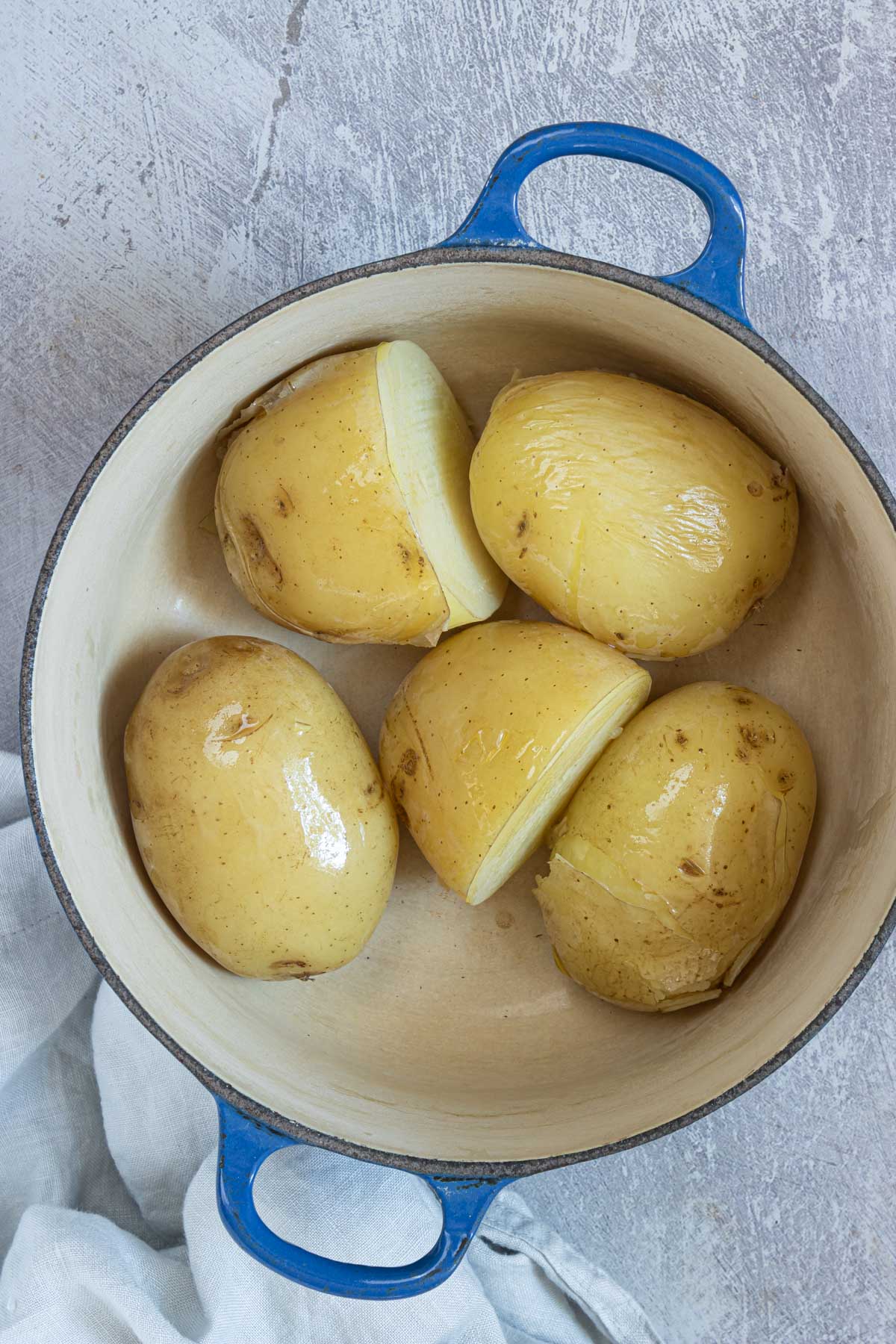
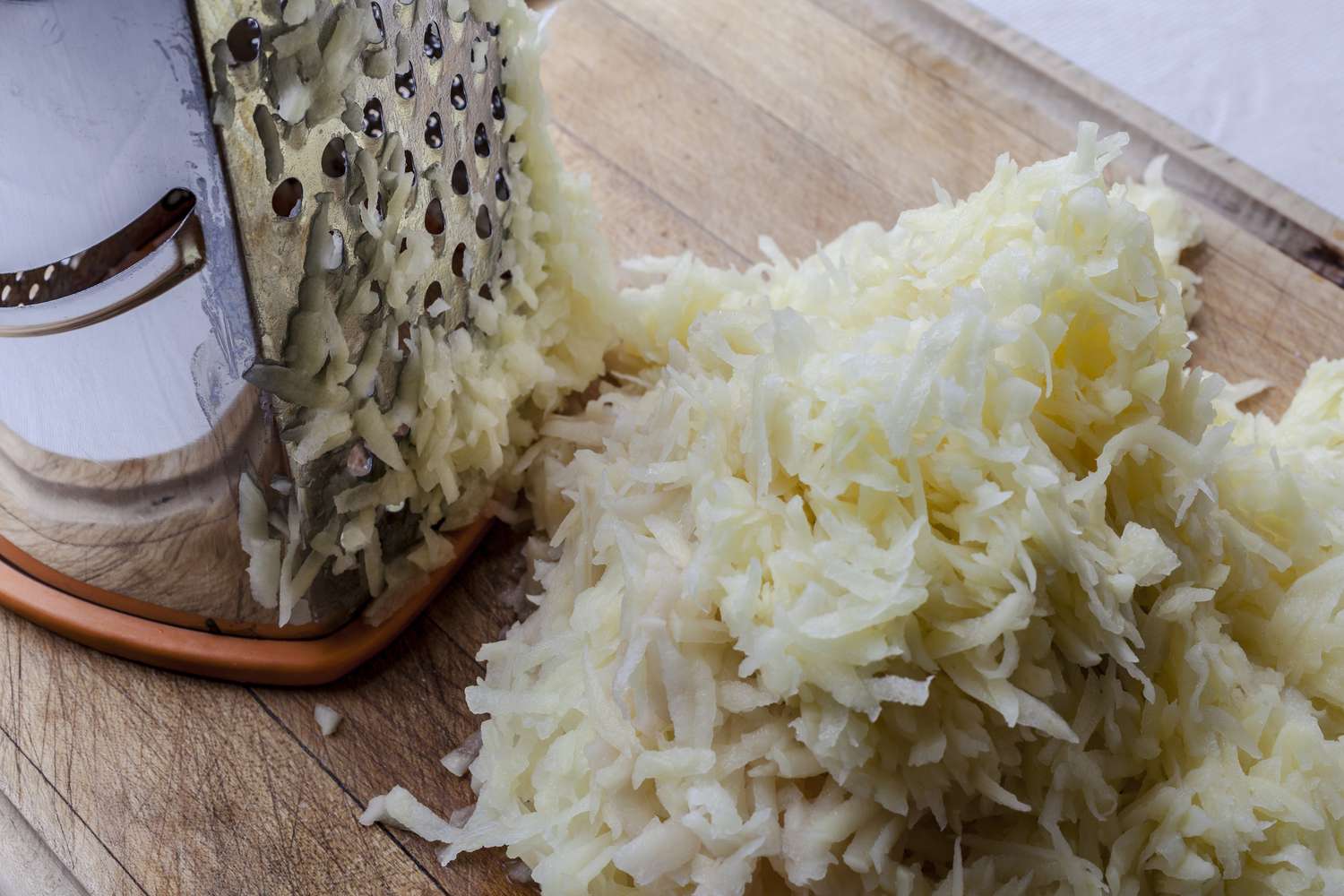



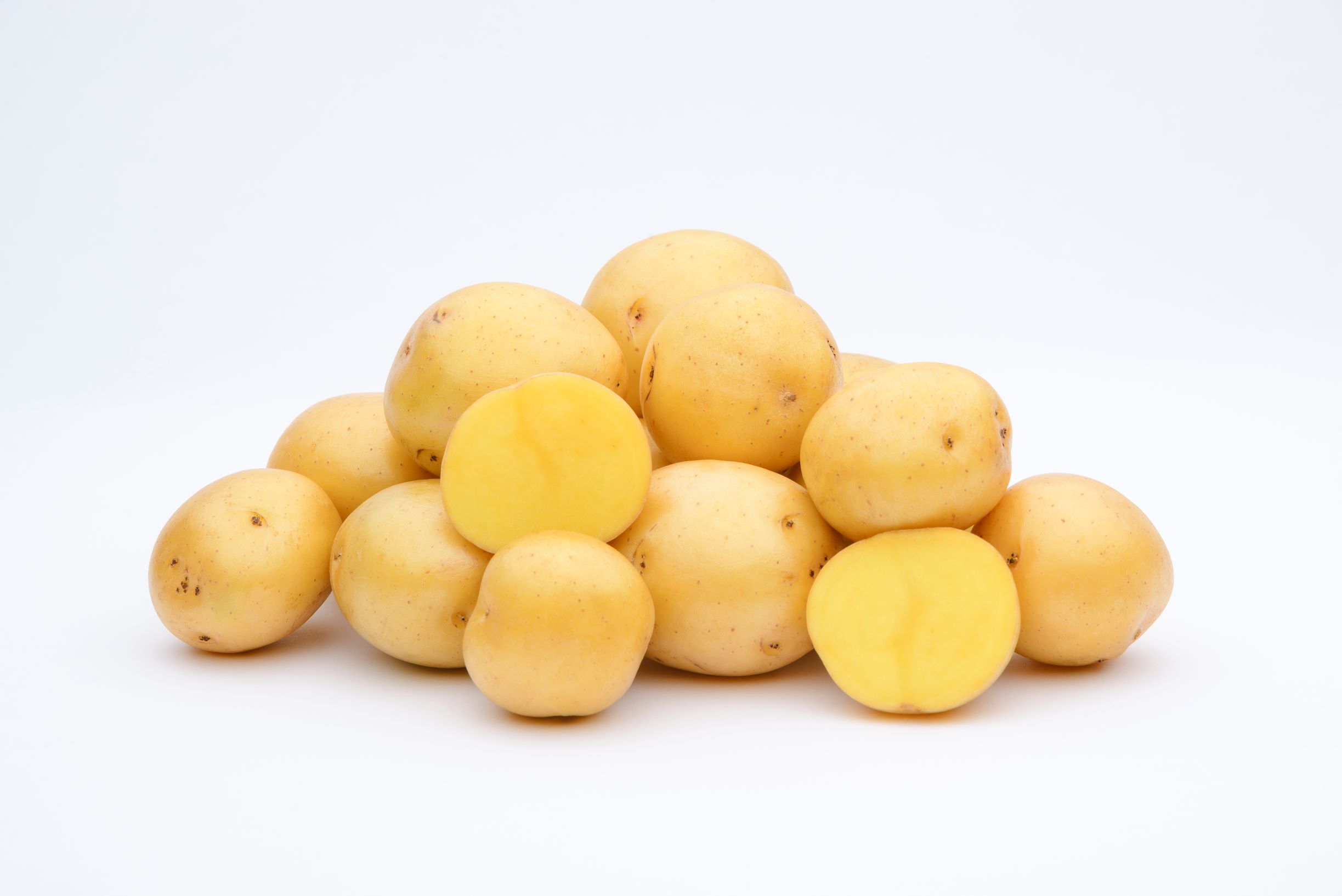
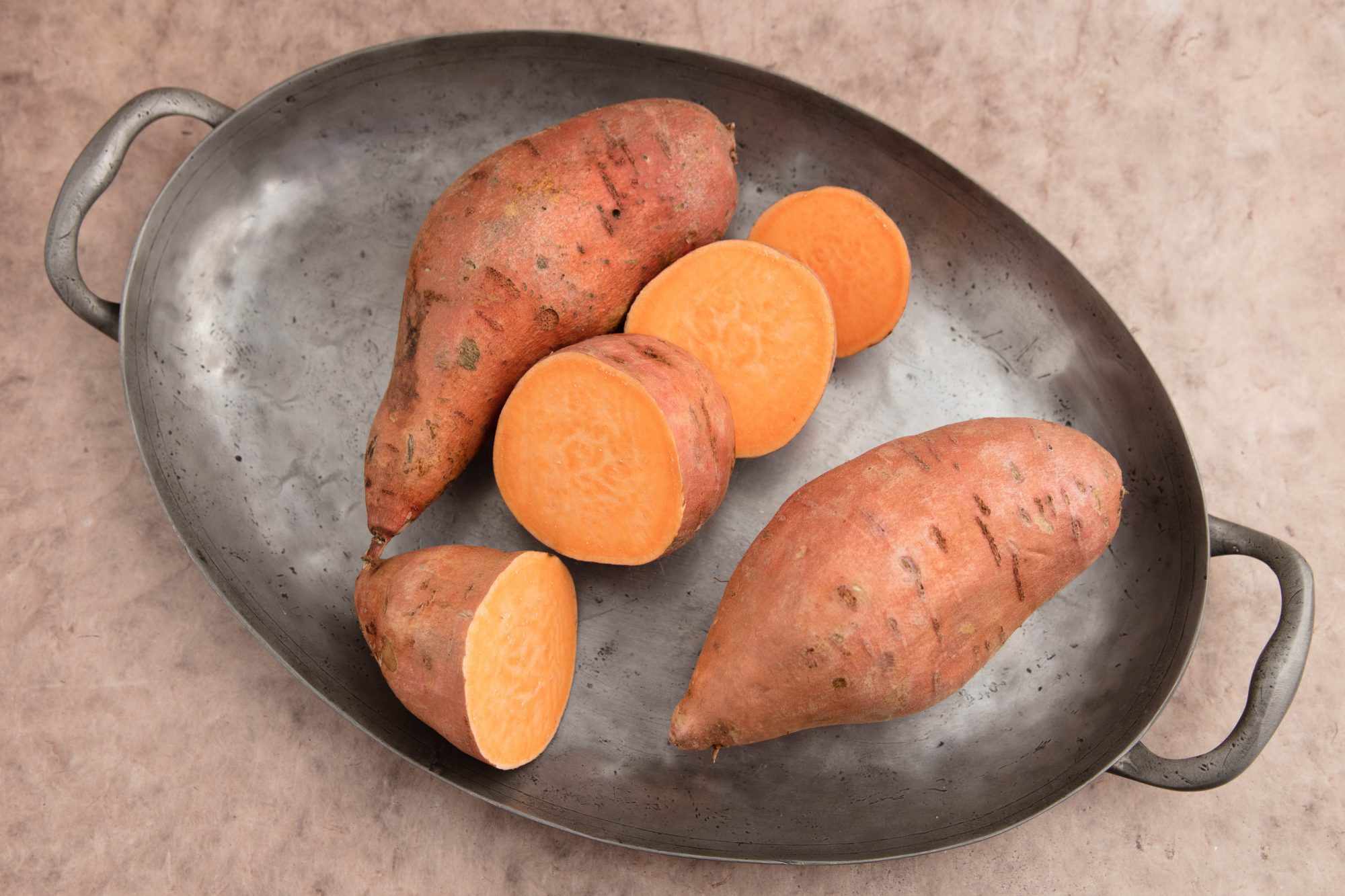
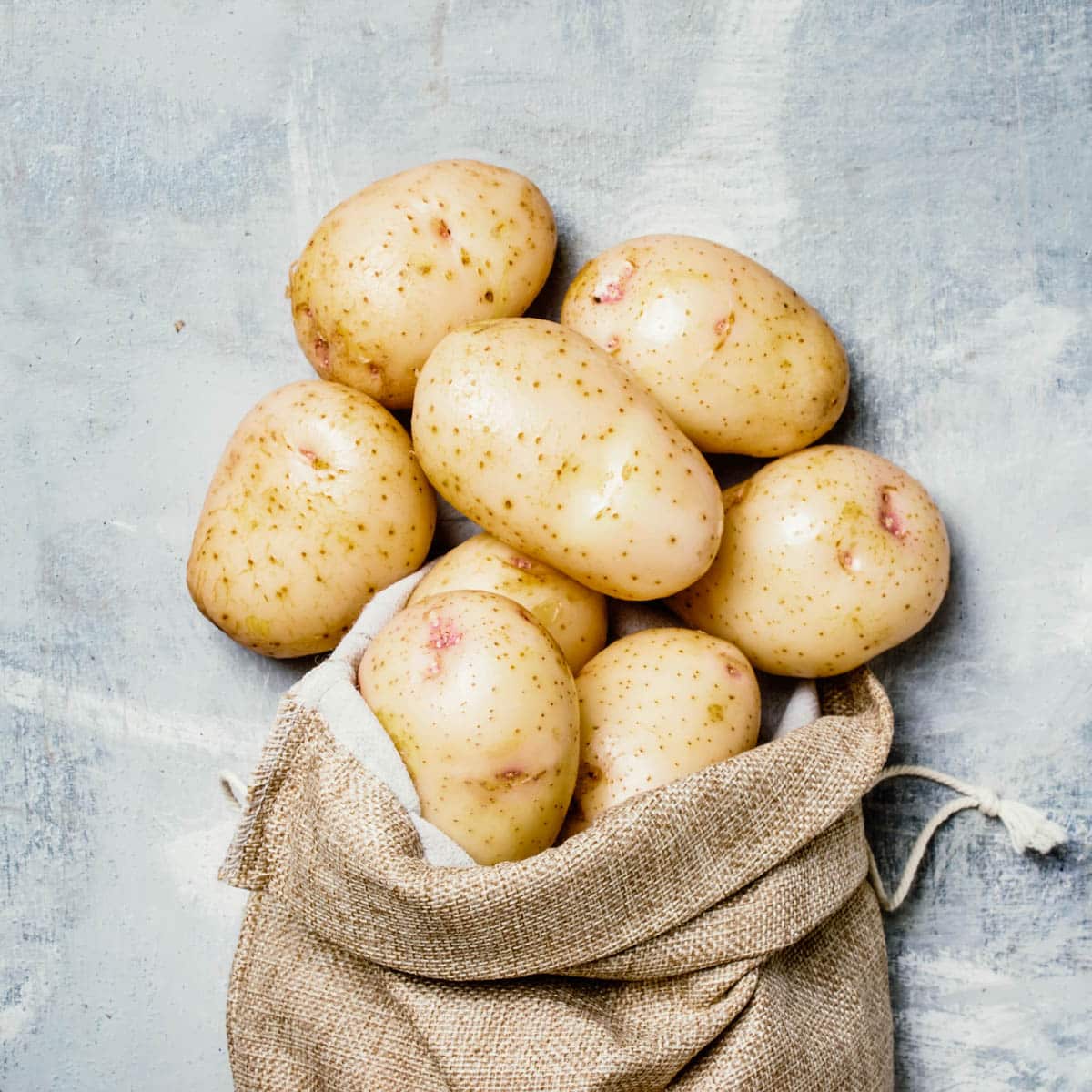
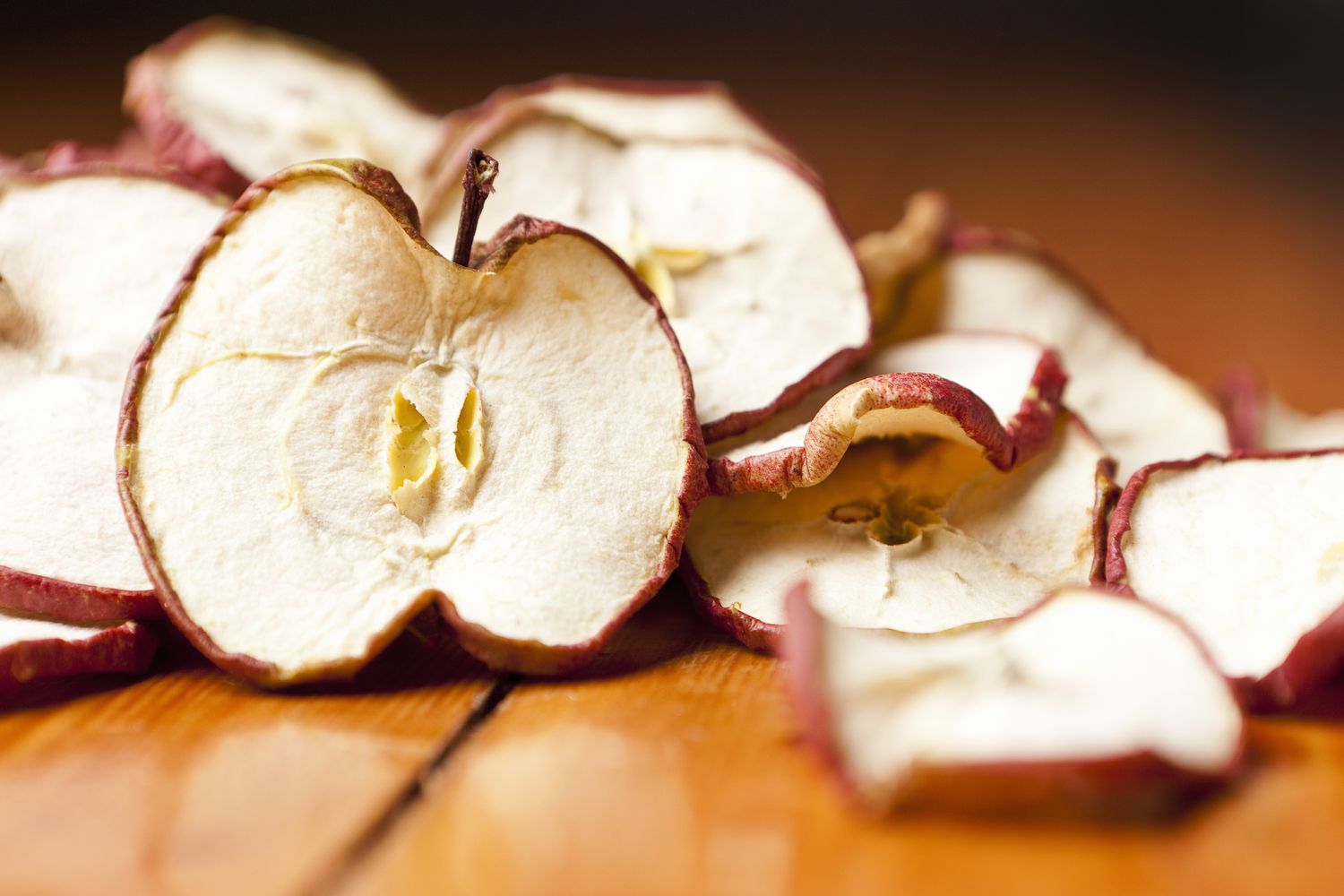
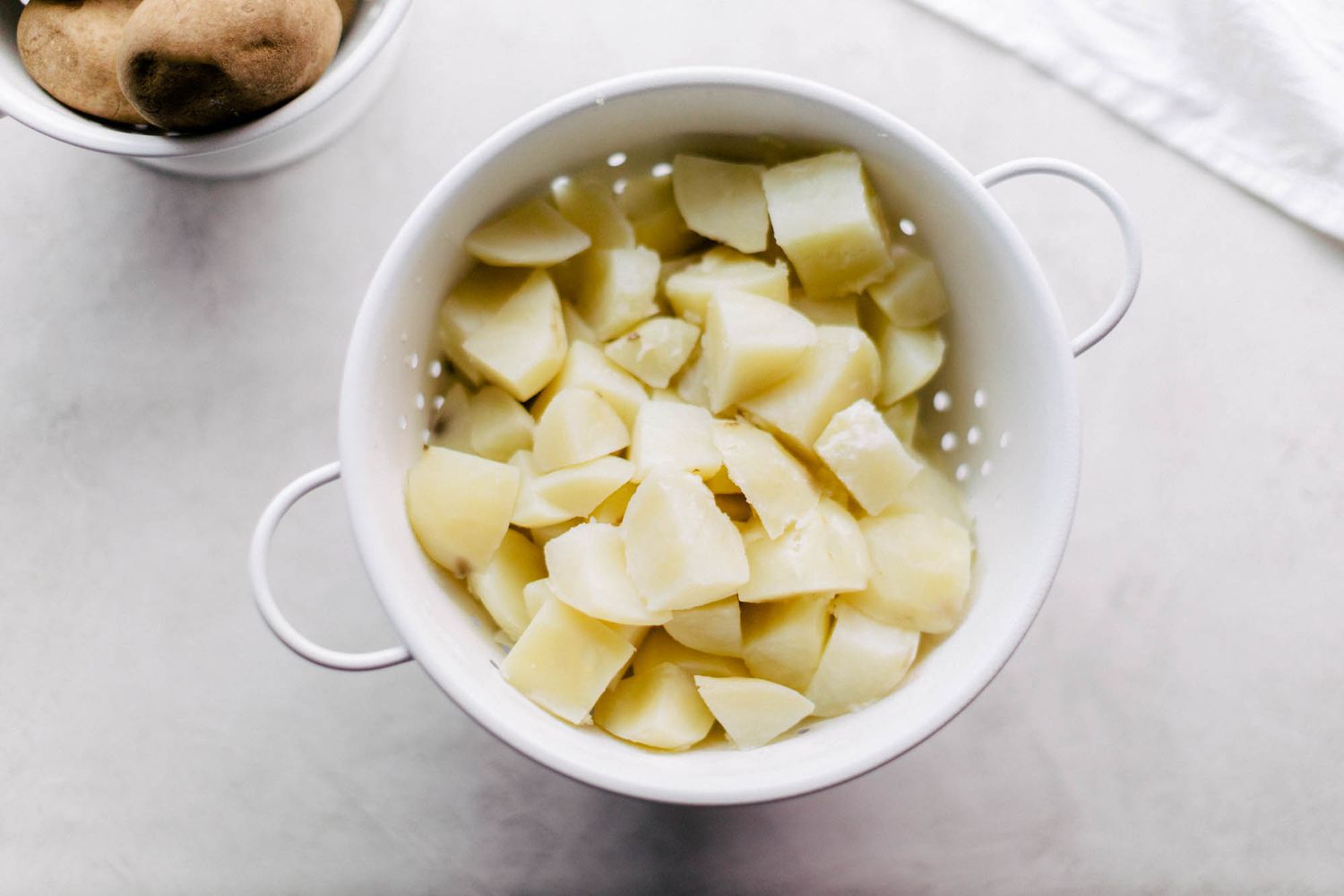

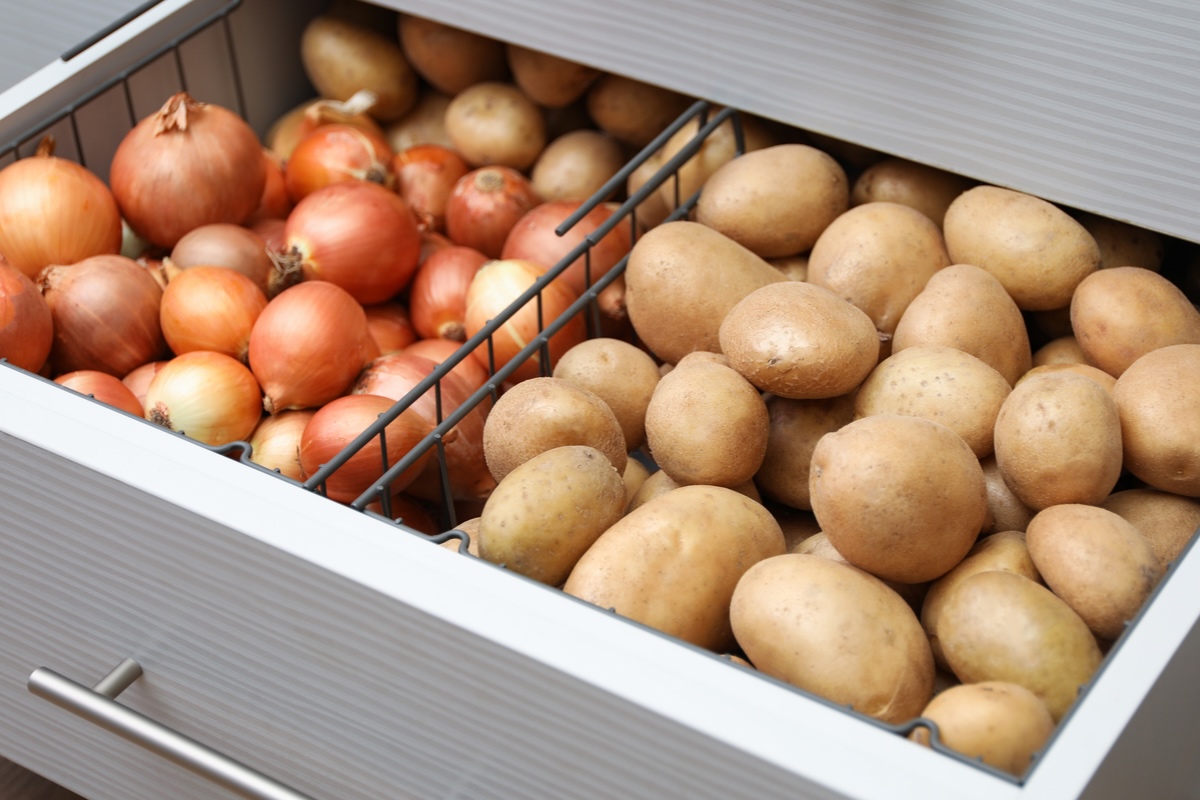
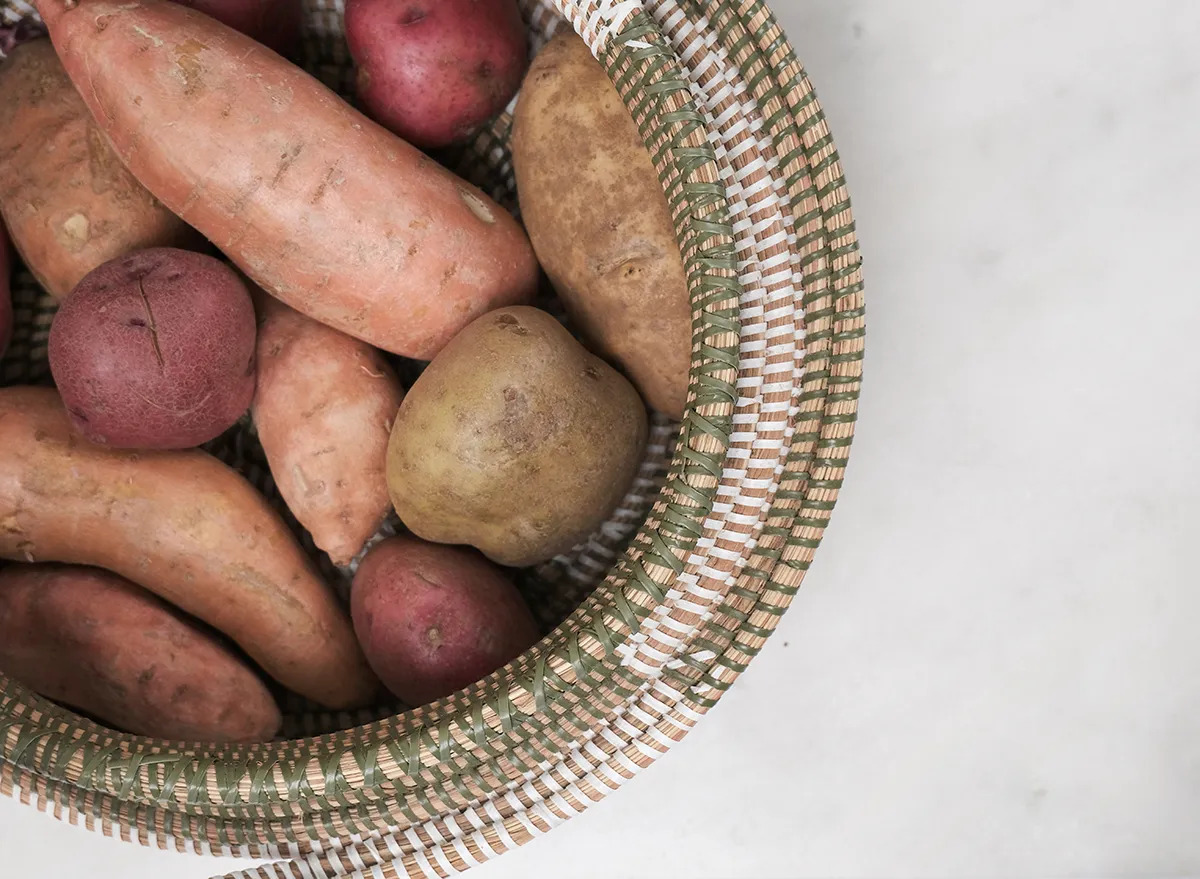

0 thoughts on “How To Store Dehydrated Potatoes”